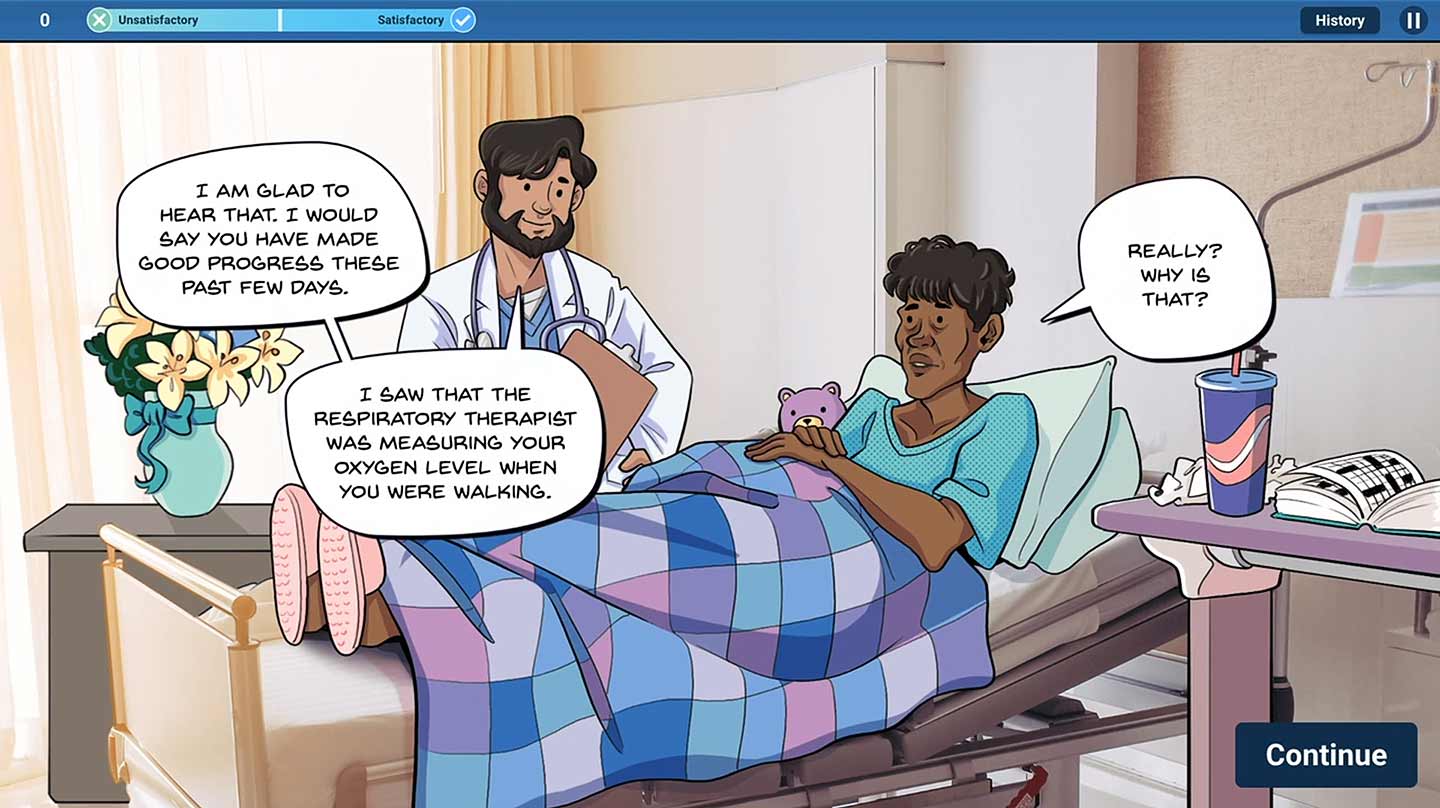Storytelling in Branching Path Training Games
Human beings have been telling stories since the dawn of time; it is how we as people have taught one another for generations. We use stories to teach an abundance of concepts, such as right from wrong, compassion, empathy as well as other skills. The most complex stories are always the most enticing, which explains why storytelling in scenario-based or branching path games can be exponentially helpful when it comes to training and onboarding employees. Almost everyone’s attention is limited when it comes to learning safety precautions or guidelines for instance. No matter how important the information, in traditional teaching, a learner’s attention will drift and they will miss important details. But, put that same information into a game: one that is interactive, entertaining, and has an easily accessible story format, and the learner is much more likely to enjoy, understand and retain the knowledge.
Branching Path Games
A branching path game can tell a more complicated and engaging story that helps the learner embrace what is being taught and apply it in the real world. Three of the most important qualities of storytelling within scenario games are immersion, characters, and multiple-choice endings (the ability to replay the game to see all endings). By focusing on these qualities, an effective branching path games results in increased knowledge retention and better, well-rounded training.
Immersion Keeps the Learner Engaged
The key to training games is the ability and the desire of the learner to become immersed in the game. They are more likely to learn when they are engaged and feel part of the game. Anyone can sit in front of a screen and click correct answers, but this doesn’t mean they will retain any of the information for more than the time it takes to get a good score. This immersive, skill-building experience helps the learner make decisions in real-world situations. For a reliable recall to occur ‘après game’, the learner’s immersion experience is key, they need to feel as though they are experiencing the “scenario” in real-time. Pleasing aesthetics and realistic consequences within the story helps create a better game experience. Virtual Lab School by Bright Horizons teaches day-care employees how to handle the stress of everyday toddler care. The game’s realistic display of busy toddlers who could crawl off tables, put things in their mouths, and other real-life dangers, provides the learner with a vivid experience of the job’s stress. The game then gives realistic feedback for each choice made, even if it’s wrong, instead of ending the game or immediately telling the learner they’re wrong. Allowing wrong choices helps the learner stay immersed in the story, understand their mistake, and comprehend the consequences. This results in retaining more of the lessons and details presented.
Create Characters That Your Learners Will Care About
When it comes to training, the characters within a branching path game are critical because they are the ‘representative faces’ of the real-world people that the learner will encounter. The characters are the main element through which learners connect to the game and learn compassion. As the learners interact with the characters, the strength of the connection helps to evolve the compassion for those characters, which in turn helps the learners understand how to treat real-world customers/coworkers. A Support Net, by OpenLearn, is an interactive story-based game for helping people learn how to positively interact with and support others going through difficult times. In the game, the learner chooses between 4 people struggling with different mental situations. The learner explores options to understand each character and through the interaction determines the best strategies to help that character.
Offer Multiple “Right” Answers
While not all branching path games have multiple endings, this method is useful because each choice the learner makes can have multiple consequences. The learner is more likely to remember their choices and even play again to see if other choices provide better outcomes. This approach helps the player learn the consequences of each choice, in a safe environment. The more the learner plays, the more their confidence builds, while also retaining the content. This translates to better job performance. The Game Agency specifically has created many story-driven games that help train employees in a wide variety of businesses like, sales, management, and even medical science. Their choose-your-own-adventure game, created for American College of Chest Physicians, (CHEST), helps medical professionals practice conversations with patients about the stigmatized drug Nebulized LAMA. With the game, the learner can experience different patient responses and learn the best approach to their treatment and care. The Game Agency also has a product, a DIY game–authoring tool called The Training Arcade, that other companies can use to create their own personalized training games. Scenarios, one of the game mechanics In The Training Arcade, allows trainers to create stories specific to their learning objectives. The Game Agency offers Instructional Design support and can fully customize the Scenarios game with illustrations, videos, and animations.



